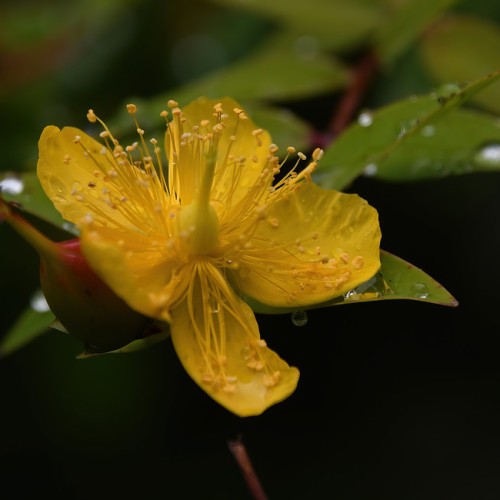
St. John's wort
Hypericum beanii
Cycle:
Perennial
Watering:
Average
Hardiness Zone:
6 - 7
Flowers:
Flowers
Sun:
Full sun,part shade
Leaf:
Yes
Growth Rate:
High
Maintenance:
Moderate
Drought Tolerant:
Yes
Salt Tolerant:
Yes
Invasive:
Yes
Care Level:
Medium
watering
St. John's wort (Hypericum beanii) is a low-growing perennial shrub that is native to the southeastern United States. It prefers areas with well-drained soil and full sun, and it is typically hardy in zones 8 and 9. Watering St. John's wort should be done twice a week. During the growing season, aim to give the plant 1-2 inches of water. Try to water near the base of the plant, avoiding getting the leaves wet. If the soil becomes too wet, allow it to dry out before watering again. In the spring and summer, St. John's wort should be watered deeply but not too often. Water slowly and allow the soil to dry out a bit between waterings. This allows for better water absorption and helps promote deep root growth. During the fall and winter, when the plant is dormant, reduce watering frequency. Only water the plant when the soil is dry to the touch. Make sure not to overwater, as this can create root rot. St. John's wort is also fairly drought tolerant once it is established. During extended periods of drought, it is best to cut back on watering frequency or let the plant go dormant and wait until a good rainfall occurs.
sunlight
St. John's wort (Hypericum beanii) prefers a sunny spot for optimal growth. It should receive 6 to 8 hours of direct sunlight per day. This could be provided by an eastern or western exposure. While St. John's wort can survive in partial shade, it will not grow to its full potential without full sun. It should also be sheltered from any strong winds that may exist in the planting area.
pruning
St. John's wort (Hypericum beanii) should be pruned regularly to keep it healthy and vibrant. Pruning should be done once per growing season, typically in late spring or early summer. To do so, it is recommended to remove any dead, diseased, or misshapen shoots, as well as any flowers for the previous year. Pruning should also be used to reduce the size of the plant if it has outgrown its desired shape and size. Additionally, any suckers (shoots that emerge from the base of the plant) should be regularly removed to prevent overcrowding. Finally, pruning back the stems by a few inches encourages the plant to produce more lateral branches and thus a more full and bushy shape.
